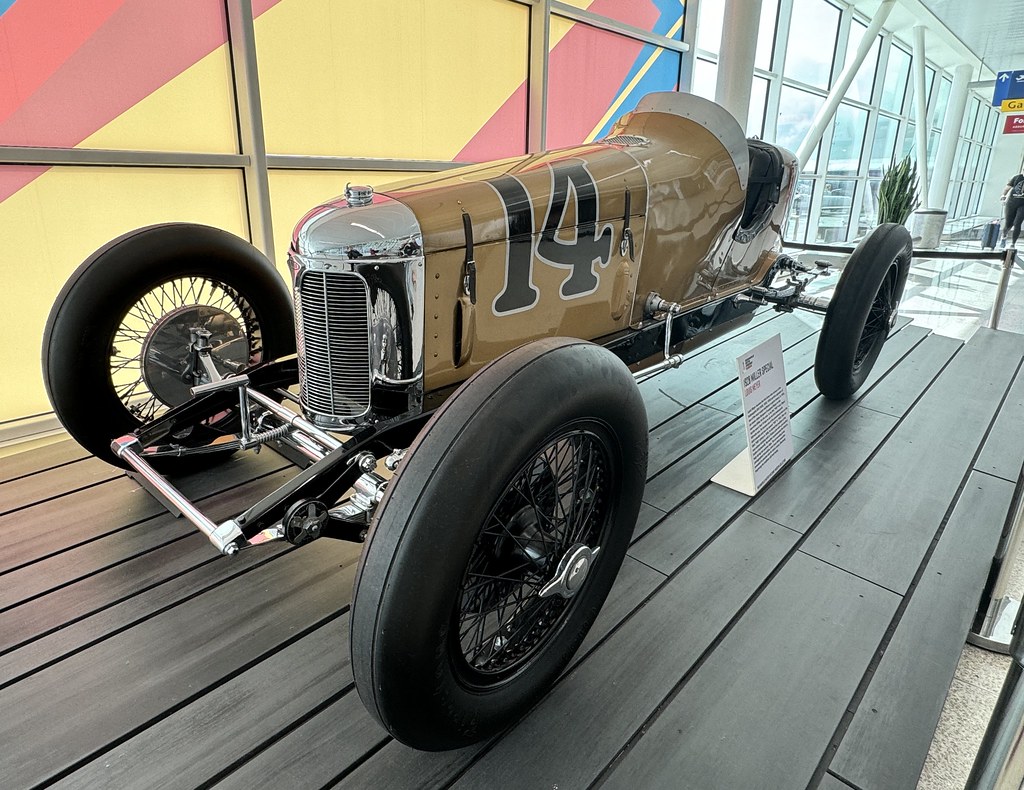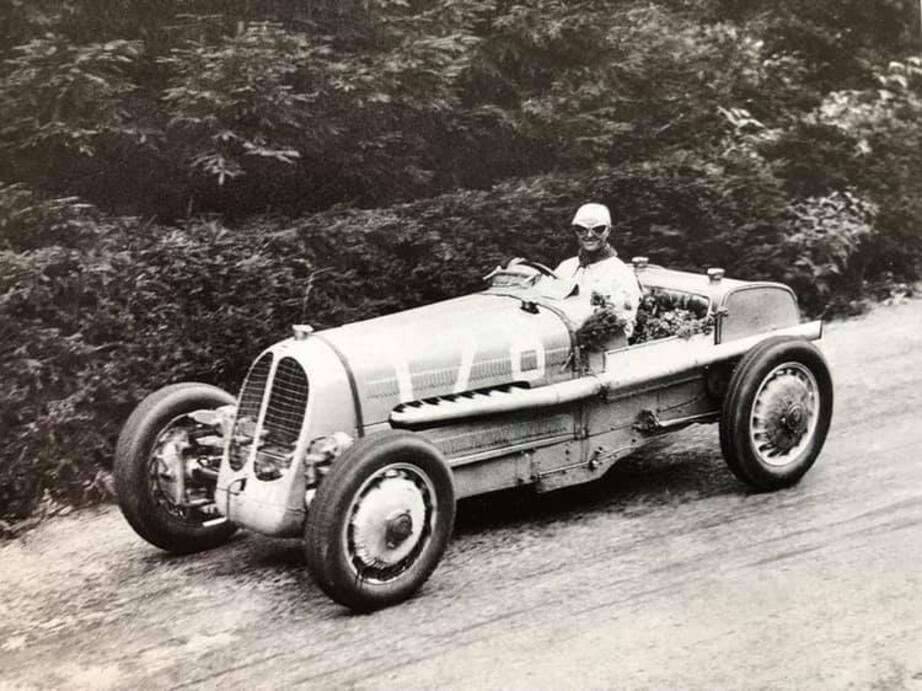by Brian Goulding – – –
In my previous article on 4wd competition cars, I wrote about the success, or rather lack of success, of four-wheel drive cars in Formula One. This time I want to explore the efforts of engineers to use four-wheel drive in the era before Formula One – pre-1950, and the coming of the World Championship.
Dutch firm Spyker (who returned to building sports cars in 1999, but subsequently went bankrupt three times), built a four-wheel drive racing car as long ago as 1902. Other than driving up a flight of stairs at the UK’s Crystal Palace in a publicity stunt, it was a complete failure. Two years later, American J. Walter Christie built a “double-ended” version of his regular front wheel drive Gordon Bennett Trophy racers. Despite a separate engine and transmission powering each axle, it was not a success.


Nothing much happened with four-wheel drive until Ettore Bugatti (1931) and Harry Miller (1931/32) almost dead-heated in reviving 4WD on their respective sides of the Atlantic. Miller entered the Harry Special and the FWD Specia in the 1932 Indianapolis 500. Both qualified well, but both retired early. Miller was made bankrupt in 1932 so development of the cars ceased, though they still appeared at Indy as late as 1937.
Bugatti designed his four-wheel drive Type 53 racer in 1931. The engine was a 5-litre supercharged straight eight with a single-piece crankshaft with nine plain bearings. It developed 300 bhp at 5500rpm, more than reasonable for the time, and had bags of torque.

A shaft ran from the engine to the four-speed gearbox mounted alongside the driver’s seat. The drive was stepped to two open drive shafts running to the front and rear axles on the left side of the car. Three differentials were used. One was combined with the gearbox, and the other two were mounted on the left side of the axles. The rear suspension was the traditional Bugatti reversed quarter elliptic springs, while the front suspension was an all-new fully independent design. This was the only time IFS was supplied on a factory Bugatti racing car.

Overall, the car had a wide two-seater look due to the offset transmission. At the front end, the normal elegant Bugatti horseshoe radiator had to be shortened and widened because it was placed behind the front suspension leaf springs, which were mounted transversally above the front axle. An unattractive, sloping nose cowling with two large meshed openings covered the front end. Behind the wide cockpit a large fuel tank with two quick-release fillers sat atop the chassis rails. All in all, it was probably the ugliest Bugatti ever built.
Drive was passed to the front wheels by universal joints which gave the car a strange steering feel. J. A. Gregoire, the famous French front drive pioneer who worked for Tracta and Hotchkiss, tried unsuccessfully to convince Bugatti that constant velocity joints were required.
The car made its competition debut in practice for the 1931 Monaco Grand Prix. Driver Alberto Divo pronounced the car undrivable and withdrew from the race. It transpired that Divo may have suffered exaggerated steering problems because of the very soft front-end setup chosen by the race engineers for the first outing.
In early 1932 Divo gained second place in the Mont Ventoux Hillclimb behind Carraciola’s Alfa Romeo. Soon after, Louis Chiron broke the La Turbie hill record in the Type 53. A second car was completed in mid-1932 and Chiron and Achille Varzi finished second and third at Klausen Pass in Switzerland behind Carraciola’s new Alfa Romeo P3. Famously, Bugatti’s son Jean took a Type 53 to Shelsley Walsh in 1932. He broke the hill record in practice but crashed heavily on his first competitive run. The car was rebuilt to as-new condition.
Bugatti lost interest in the project so there were only three more hillclimb appearances over the next three years. Type 53s ran at Parma Poggio in Italy, La Turbie and Chateau Thierry with great success.
In the 1980s Geoffrey St. John ran chassis number 53002 in two demonstration runs at Shelsley Walsh. After being held for a long time at the start the first run was ruined when the car overheated and dropped onto seven cylinders. The second run was much better as the car ran cleanly. St. John liked the car.
His comments were interesting. “It was infinitely better than I imagined. I had never been an admirer of the Type 53, so I wasn’t expecting to be impressed at all. I’ve driven Type 54s, which use the same engine, and regard them as the foulest things known to mankind, with lots of power but not much else. I must admit that I tended to think of the Type 53 in the same light, especially as it looks so dreadful. But the Type 53 handled so well. It would have incredible potential with the right preparation and development.”
So that was it for four-wheel drive until the Ferguson came along in 1961. The Type 53 Bugatti fits neatly into the pattern of later cars – not good enough for Grand Prix glory but a winner in hillclimbing, where speeds are lower and traction more important.

